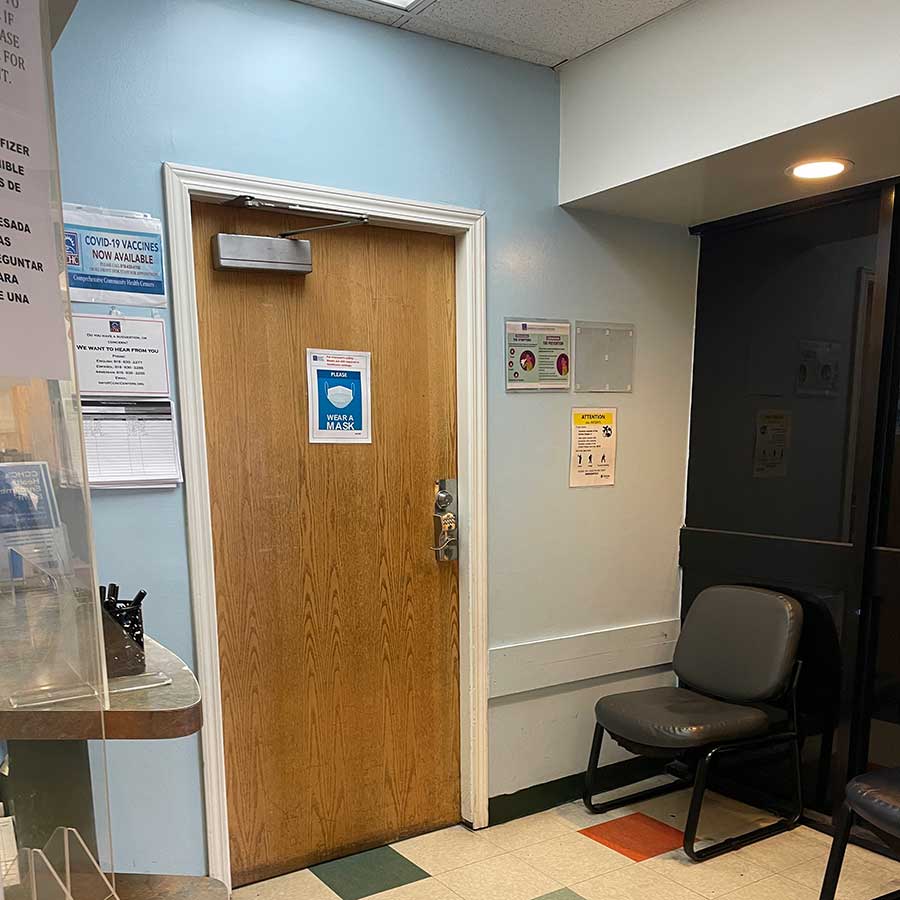We often associate the term asbestos with popcorn ceilings, floor tiles, or materials in our attic. Often left out of consideration is office buildings. Until the late 1970s and early 1980s asbestos was widely used in common building materials in residential, commercial and industrial settings. Here we focus on asbestos containing materials (ACM) in offices and other commercial settings and how it may be managed.

Where Do I Find Asbestos In My Office Building?
Asbestos can be found in numerous locations of an office building, some harder to find than others. Thermal system insulation such as asbestos-containing pipe insulation, boiler insulation, and gaskets may be found in mechanical areas. Spray-on fireproofing may also be present in these spaces. Flooring materials such as vinyl floor tile and the mastic glue, linoleum, and grout or adhesive of ceramic tiles may at times contain asbestos. Asbestos can also be found in ceiling materials such as textured or popcorn ceilings and ceiling tiles. Wall materials such as drywall, skim coat, drywall tape and joint compound, plaster, tile adhesive or grout are also considered suspect. Fire doors in commercial spaces may also contain asbestos. The examples are many, and locating them within the building materials requires a Certified Asbestos Consultant with analysis by a Certified lab.
While many believe that asbestos-containing materials were banned or phased out in the late 1970s, this is a common and potentially dangerous misconception. In 1989, The Environmental Protection Agency (EPA) and Consumer Product Safety Commission (CPSC), under the Toxic Substances Control Act (TSCA) and the Clean Air Act (CAA), banned certain uses of asbestos and also prevented newer uses of asbestos. This 1989 Partial Ban included: Pipe Insulation, Block Insulation, Spray applied Surfacing Materials, Corrugated Paper, Roll board, Commercial Papers, Specialty Papers, Flooring Felts, Wall-patching Compounds, Artificial Fireplace Embers, and new commercial uses after August of 1989. This did not ban the use of asbestos in many other materials and therefore some items used after the 1970s may possibly contain asbestos.
In 2019 the Environmental Protection Agency issued the Final Rule which restricts the use of asbestos in materials not subject to the 1989 Partial Ban. It is important to note that this restriction is not an outright ban, as it allows the EPA to continue to evaluate non-banned products containing asbestos, before they can be produced or sold in the U.S. The complete list of restricted materials can be found here.
Who Regulates Office Buildings for Asbestos?
Buildings that are considered “Public”, such as office spaces or multi-residential buildings with 4 or more units are regulated by the National Emission Standards for Hazardous Air Pollutants Compliance Monitoring (NESHAP) agency with the possibility of additional regulations enforced by local city, county, and state regulatory agencies (In Southern California this involves the South Coast Air Quality Management District (SCAQMD)). NESHAP requires that testing of materials in these properties are done by a licensed and certified asbestos inspector. Also regulated is the removal of asbestos containing materials during a demolition and/or renovation of a property and requires a specific set of work practices.
The Occupational Safety and Health Administration (OSHA) also regulates asbestos in commercial buildings and require an operation and maintenance program for asbestos-containing materials. In California, these requirements and more can be found here.
Operations & Maintenance Programs
Operations and Maintenance Programs (O+M Programs) are required by the EPA and OSHA. OSHA specifically protects workers who work in buildings that contain ACM, but who do not repair or remove the ACM. For more information on setting up this program visit here (Setting Up Your Facility Asbestos Operations and Maintenance Plan). Required is that the owner of a building that contains suspect, or known ACM, to have a written program that describes the precise details and location, as well as addresses the following work activities and associated individuals:
Activities unlikely to involve direct contact with Asbestos Containing Materials (ACM): Commonly include office, retail workers.
Activities that may potentially cause accidental disturbance of Asbestos Containing Materials (ACM): Commonly includes janitorial, custodial, housekeeping activities such as buffing floor tile or light maintenance activities that inadvertently damage ACM (such as accidental damage drywall/ceiling during routine plumbing or HVAC repairs)
Activities that involve relatively small disturbances of Asbestos Containing Materials (ACM): These small-scale (≤3 linear ft. or ≤3 sq. ft.), short-duration activities include but are not limited to maintenance, repair, or installation that may purposely disturb ACM (such as installation of new light fixtures, flooring repair, pipe leak repair, etc.)
O+M Programs are not designed to address large-scale disturbance, such as remediations, renovations or demolitions. Intentional activities that disturb ACM, also known as abatement, require removal by EPA-certified personnel with appropriate notifications provided to the SCAQMD..
Building owners and Facility managers should consult and hire a trained and accredited asbestos professionals for prior to maintaining or removing any suspect material. If you suspect asbestos in your office building, or have questions regarding your O+M plan, reach out to Mailman Environmental to discuss your concerns with one of our certified professionals.
Do you have concerns about your own residence, school, or business? For more information, or to schedule a Mold Inspection, Lead-Based Paint Inspection, Radon or Asbestos Inspection in Santa Clarita, the Antelope Valley, Ventura County, or Greater Los Angeles area you can submit an online request, call us (661) 219-5160 or email request to [email protected]
About Mailman Environmental
Mailman Environmental is Southern California’s leading consultant for indoor air quality testing, asbestos, mold, lead, VOCs, formaldehyde, soot, char, ash, and smoke damage, particulates, and other chemicals. Mailman Environmental and our contractors and vendors maintain an extensive list of certifications and accreditations from the State of California, Department of Public Health, and numerous professional organizations. Mailman Environmental proudly serves all of Southern California including Santa Clarita, Antelope Valley including Palmdale and Lancaster, Ventura County, San Fernando Valley, and the Greater Los Angeles area.
Sources:
https://www.epa.gov/asbestos/setting-asbestos-operations-and-maintenance-om-program
http://www.aqmd.gov/home/rules-compliance/compliance/asbestos-demolition-removal
